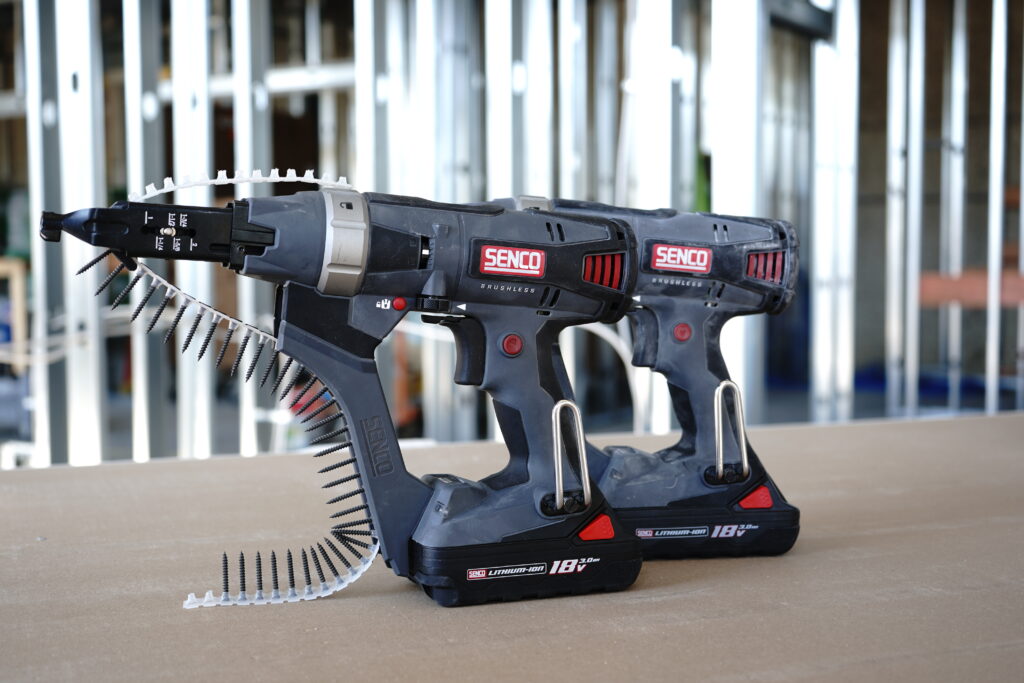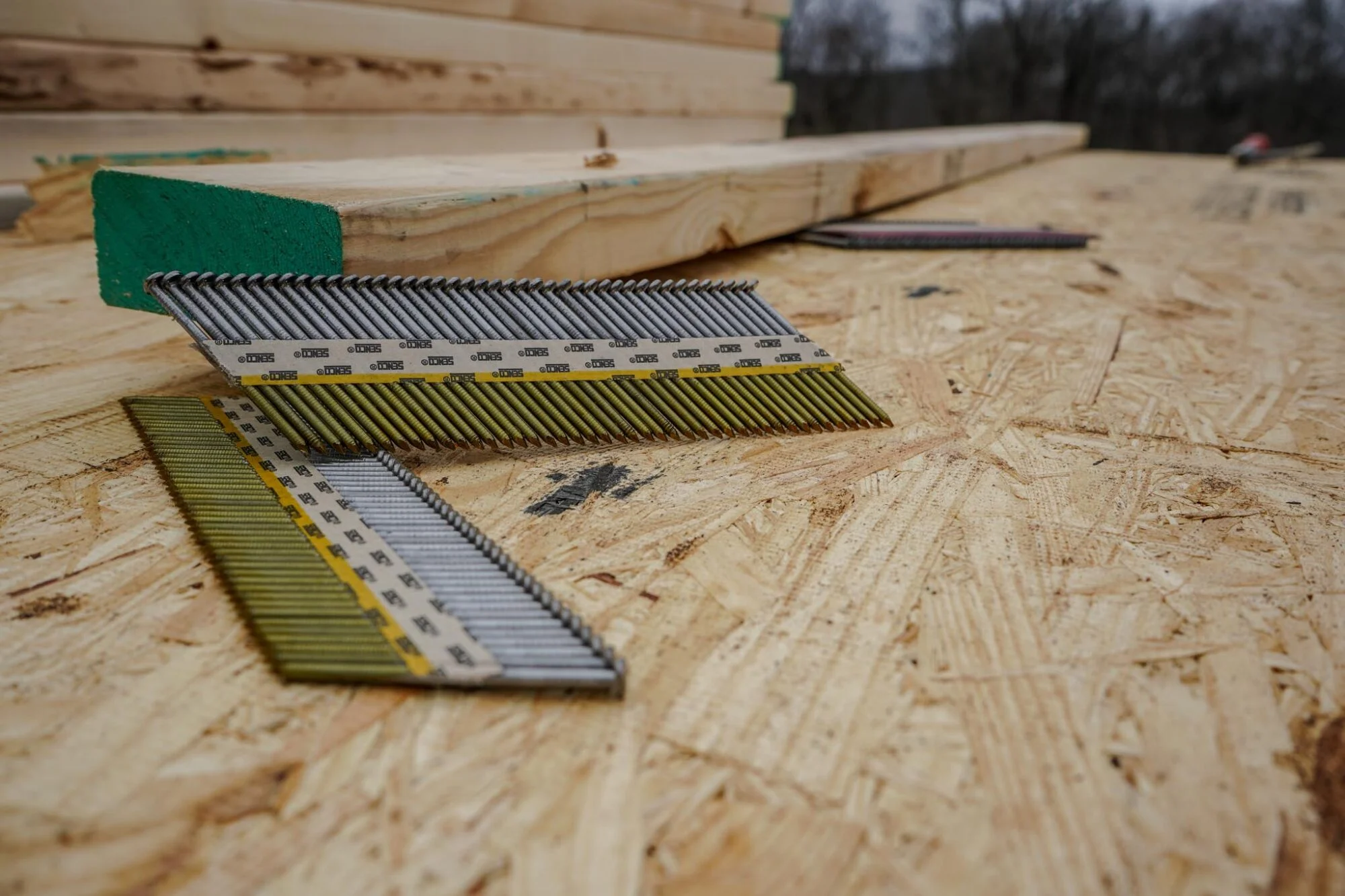AUTO-FEED SCREWDRIVERS FOR SHEET METAL

How To Use Auto-Feed Screw Guns for Roofing, Siding, Paneling and More
Powered screwdrivers, commonly known as screw guns, are many professional installers’ first choice for attaching sheet metal such as wall panels and roofing. These tools excel above and beyond standard drills and impact drivers for one simple reason – their depth-sensitive clutch. Unlike drills and impact drivers, screwdrivers release the screw at a predefined depth, preventing the user from over-tightening and stripping the screw, or under-driving and creating a weak connection.
However, there is a common misconception that auto-feed screwdrivers aren’t as effective for metal fastening as traditional screw guns. The fact is, auto-feed technology has improved substantially over the last decade or so, making auto-feed screwdrivers ideal for high-volume metal fastening jobs.
The same benefits you get from auto-feed technology on jobs like drywall, fencing, decking and subfloor apply to sheet metal as well. By driving collated strips of fasteners automatically, feeding one after the other, auto-feed systems reduce time, effort and fatigue. High-quality auto-feed systems like SENCO’s DURASPIN are also precise and easy to operate, even for beginners.
If you’re considering using an auto-feed screwdriver for metal, you’ll want to make sure it has all the features you need.
WHAT TYPES OF AUTO-FEED SCREWDRIVERS ARE AVAILABLE
Auto-feed screwdrivers come in two basic types:
Integrated systems – these all-in-one systems include the motor and feed system in one corded or cordless tool.
Auto-feed attachments – these are standalone feed systems that slot onto the front of standard screw guns, which are typically sold separately.
Whether you prefer corded or cordless, there are plenty of options for integrated systems suited to metal fastening. Attachments warrant more research prior to buying. Typically, attachments are compatible with specific models or brands of screwdriver. An auto-feed attachment may be rated for metal, but it will only work if the screwdriver it’s attached to has the right speed and torque for the job. In short, make sure the driver you’re using can handle the type of metal you’re drilling.
Additionally, auto-feed drivers are available as a stand-up tool, which eliminates back and joint strain and speeds up the installation of metal roofing.
FEATURES TO CONSIDER
Adjustable Speed
When it comes to tapping metal, slower is faster. If your driver’s RPM is too high, the screw tip will overheat and dull from friction, preventing it from biting and potentially ruining the workpiece. A good driver for metal drilling should have a variable speed trigger for speed control on the fly. Drivers should max out at 2,500 RPM, so be sure you’re not buying a driver engineered for drywallers, which typically max out at 5,000 RPM. Some drivers, like SENCO’s integrated DURASPIN systems, have the ability to drop the maximum speed down to 1600 RPM for thicker metal and denser substrates.
Tool-Free Depth-of-Drive
Most drills and impact drivers rely on a torque-sensitive clutch to prevent over-driving – once the drill encounters a set amount of resistance, it stops rotating the bit. This is an issue because, like knots in wood, sheet metal goods are often denser in some spots than others, requiring the user to constantly adjust torque settings.
Screw guns rely instead on a depth-sensitive clutch, which simply releases the screw once the fastener hits a predefined depth, generally once the nose of the tool is flush with the metal surface. Systems like DURASPIN replicate this clutch system in an auto-feed format. You can easily “dial in” to the correct depth with a tool-free depth-of-drive knob. The screw will release at the same depth every time without fail.
Feed-on-Return
The action of the mechanism that automatically feeds screws might not seem like a big deal, but when precision matters – as it often does when attaching metal – a “feed-on-return” system is key. Most auto-feed drivers have a “feed-on-drive” system, which advances the screw as you press the nosepiece down. SENCO’s DURASPIN systems feature a “feed-on-return” system, which lines the screw up with the bit before you drive.
Visually, this gives the user a much more precise idea of where the screw will go. It allows the user to create straighter lines and line the fastener up with guide marks much more easily.
Suitable Screw Options
Most collated screws used in auto-feed drivers are drywall or wood-to-wood screws. It goes without saying, but these screws are not recommended for metal applications. Metal screws generally have self-tapping points, tighter threads and other features that make them suitable for metal fastening. There are a wide range of metal screws for highly specific materials and applications – make sure the driver you use accommodates collated screws of all types.
Additionally, make sure you have drive bits that are up to the job. SENCO’s Rex drive bit, for example, is similar to a star bit with a rounded tip. The secure fit and increased contact area between the bit and screw head is optimal for high-torque applications and reduced cam-out in metal drilling.
LEARN MORE ABOUT COLLATED SCREWS
Removable Feed System
In case of a misplaced screw or an incomplete sink, you may need to remove the feed system to touch up your work. All SENCO cordless drivers and attachments include an easily removable feed system, allowing you to expose the drive bit. This makes it easy to fix mistakes without switching tools. Additionally, some auto-feed systems with a removable feed system can accommodate multiple types of drive bits.

